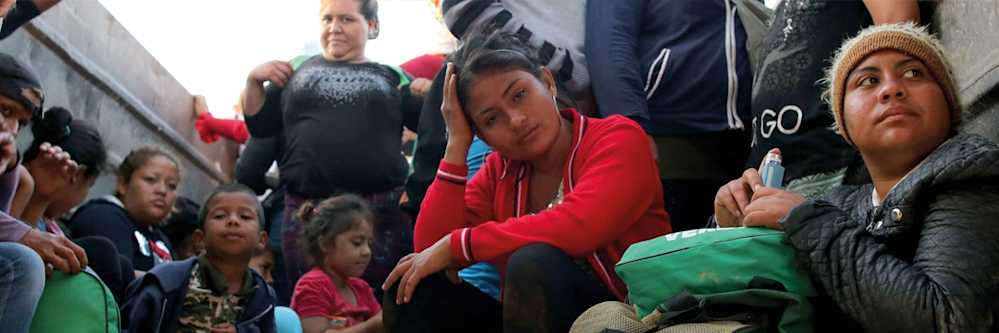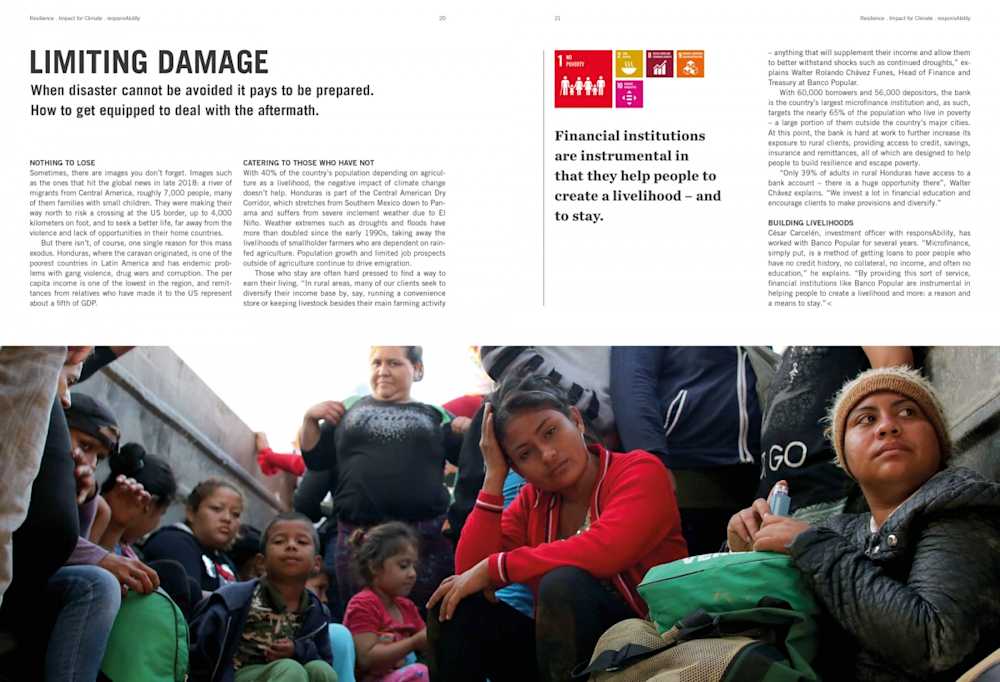Financial inclusion
Limiting damage

When disaster cannot be avoided it pays to be prepared. How to get equipped to deal with the aftermath.
Nothing to lose
Sometimes, there are images you don’t forget. Images such as the ones that hit the global news in late 2018: a river of migrants from Central America, roughly 7,000 people, many of them families with small children. They were making their way north to risk a crossing at the US border, up to 4,000 kilometers on foot, and to seek a better life, far away from the violence and lack of opportunities in their home countries.
But there isn’t, of course, one single reason for this mass exodus. Honduras, where the caravan originated, is one of the poorest countries in Latin America and has endemic problems with gang violence, drug wars and corruption. The per capita income is one of the lowest in the region, and remittances from relatives who have made it to the US represent about a fifth of GDP.
“Financial institutions are instrumental in that they help people to create a livelihood – and to stay.”

Catering to those who have not
With 40% of the country’s population depending on agriculture as a livelihood, the negative impact of climate change doesn’t help. Honduras is part of the Central American Dry Corridor, which stretches from Southern Mexico down to Panama and suffers from severe inclement weather due to El Niño. Weather extremes such as droughts and floods have more than doubled since the early 1990s, taking away the livelihoods of smallholder farmers who are dependent on rainfed agriculture. Population growth and limited job prospects outside of agriculture continue to drive emigration.
Those who stay are often hard pressed to find a way to earn their living. “In rural areas, many of our clients seek to diversify their income base by, say, running a convenience store or keeping livestock besides their main farming activity – anything that will supplement their income and allow them to better withstand shocks such as continued droughts,” explains Walter Rolando Chávez Funes, Head of Finance and Treasury at Banco Popular.
With 60,000 borrowers and 56,000 depositors, the bank is the country’s largest microfinance institution and, as such, targets the nearly 65% of the population who live in poverty – a large portion of them outside the country’s major cities. At this point, the bank is hard at work to further increase its exposure to rural clients, providing access to credit, savings, insurance and remittances, all of which are designed to help people to build resilience and escape poverty.
Invest in financial inclusion INVESTMENT PRODUCTS
“Only 39% of adults in rural Honduras have access to a bank account – there is a huge opportunity there”, Walter Chávez explains. “We invest a lot in financial education and encourage clients to make provisions and diversify.”
Building livelihoods
César Carcelén, investment officer with responsAbility, has worked with Banco Popular for several years. “Microfinance, simply put, is a method of getting loans to poor people who have no credit history, no collateral, no income, and often no education,” he explains. “By providing this sort of service, financial institutions like Banco Popular are instrumental in helping people to create a livelihood and more: a reason and a means to stay.”

This article was originally published in Impact for Climate, the responsibility Impact Report 2019. Find the entire publication here: IMPACT FOR CLIMATE